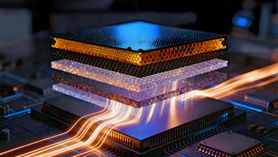The global energy transition is an incentive for the development of new energy technologies
- https://www.techcult.ru/
- Jan 30, 2022
- 5 min read
The global energy transition, which Western countries are actively lobbying for both political reasons and to address global warming, will cost the global economy $275 trillion by 2050, according to the McKinsey Global Institute, a research arm of the McKinsey consulting firm.
The most affected economically will be those countries whose economy is based on the extraction of fossil fuels and its supply to the world market. According to VTB Capital analysts, reducing emissions by 25% will cost Russia 43 trillion rubles (or 1.3% of GDP annually). To reduce them by 50%, you will have to spend 86.6 trillion rubles (2.7% of GDP annually). Reducing emissions by 100% by 2060 would require spending in the amount of 479.8 trillion rubles, which is equivalent to 15% of GDP in annual terms.
A feature for Russia is that a significant share in the structure of fossil fuels is occupied by coal, which is not only consumed in the domestic market of Russia, but also shipped for export. The abandonment of coal-fired power generation will occur in many countries as a priority. Among the risks of the energy transition is the volatility of electricity prices, which is now observed in the world.

Various groups of scientists are currently working on the creation of the latest technologies for generating electrical energy. These include research on the use of atomic energy with various types of fuel, thermonuclear fusion, hydrogen energy, etc. However, I am convinced that the simpler the power generation technology, the lower the electricity prices will be, which is extremely important now. Therefore, a fundamentally new stage in the development of scientific and technical thought should, I hope, lead to the creation of a simple technology for generating electricity from the surrounding space.
Indeed, if solar energy is well established in the world, working on the conversion of the visible spectrum of the sun's radiation (sunlight), then why not create a material that will convert particles of the invisible spectrum of the sun's radiation, for example? When solving such a problem, and this, first of all, is the creation of the latest materials for converting particles of the invisible radiation spectrum into electric current, humanity will receive energy sources that will generate energy around the clock and do not depend on the weather. These requirements are fully met by Neutrinovoltaic technology - a method of converting the kinetic energy of neutrinos and other surrounding radiation fields into electric current, developed by the German company Neutrino Deutschland GmbH and the international research alliance Neutrino Energy Group.
Energy conversion is made possible by the development of special multi-layer coatings applied to metal foil or metal carrier material. The composition of the coating is a multilayer structure of alternating layers of graphene and silicon with the addition of alloying elements specified in patent No. EP3265850A1.

The experience and scientific foresight of the founder and project manager and at the same time the CEO of Neutrino Deutschland GmbH, Mr. Holger Thorsten Schubart, allowed the company to take a priority position in the study of graphene as a material for generating electricity and to be far ahead of other researchers in the competition.
I often meet comments from readers who are far from understanding the basics of the process of generating electricity when using graphene in a working element and specialists who begin to derive formulas for the effect of solar neutrinos on a multilayer material of a working surface and prove the impossibility of obtaining current from their impact. In this regard, I would like to note the following:
1. In 2015, the Nobel Prize in Physics was awarded to Takaaki Kajita and Arthur B. McDonald, leaders of two experimental groups, Super-Kamiokande and SNO, studying the properties of neutrinos. Their work convincingly proved that neutrinos, of which three varieties are known, are capable of oscillating - spontaneously turning into each other on the fly. Neutrinos of a certain type can be born in reactions with elementary particles, and neutrinos of a certain mass can propagate in space. It is the proof of the presence of mass, and therefore of energy, that is the key argument for the theoretical possibility of converting neutrino energy into electric current. In 2019, information was published that scientists at the Karlsruhe Institute of Technology (KIT) managed to determine the mass of neutrinos with unprecedented accuracy.
2. The widespread opinion among specialists and non-specialists that neutrinos do not interact with matter is erroneous. This is evidenced by the published results of studies conducted at ORNL's Spallation Neutron Source (SNS) and published in the journal Science, which provide convincing evidence for a neutrino interaction process predicted over 40 years ago, but never observed. The COHERENT experiment, which used the world's smallest neutrino detector, found a large fingerprint of elusive, electrically neutral particles that interact weakly with matter: after more than a year of work at the Oak Ridge National Laboratory (ORNL) of the US Department of Energy (DOE). In 2017, elastic coherent neutrino scattering was experimentally discovered.
ORNL physicist Jason Newby, technical coordinator and one of 11 ORNL contributors at COHERENT, in collaboration with 80 researchers from 19 institutions and four countries, says: "The one-of-a-kind particle physics experiment at Oak Ridge National Laboratory measures the coherent scattering of low-energy neutrinos on nuclei. The researchers were the first to discover and analyze the coherent elastic scattering of neutrinos by nuclei. The description of the experiments is detailed in the article "World's smallest neutrino detector finds big physics fingerprint". Low-energy neutrinos, like a tennis ball hitting a bowling ball, "hit" the large and heavy nucleus of an atom and transfer a tiny amount of energy to it. As a result, the core almost imperceptibly bounces off, i.e. Low-energy neutrinos participate in weak interactions with matter nuclei.
3. The main source of difficulty in studying neutrinos lies in their elusiveness. Neutrinos are not affected by strong nuclear forces and electromagnetism. Neutrinos participate only in the weak interaction. Because of this, the neutrino scattering cross section is very small and the probability of their detection is negligible. It is possible to register neutrinos only when a huge detector is substituted under a large neutrino flux. However, high-energy neutrinos are registered by detectors, which means that they interact with matter.
4. For the developers of Neutrinovoltaic technology, it is not important whether the energy from neutrinos is completely transferred to matter, like low-energy neutrinos, or only a small part is transferred in the form of an increase in vibrations of graphene atoms, it is only important that when neutrinos pass through graphene, “graphene waves” arise, like waves on the surface of water when a stone is thrown into it. "Graphene waves" are clearly visible in a microscope with high resolution.
5. It is necessary to note an important feature of the new Neutrinovoltaic technology - completely different types of radiation, such as electromagnetic, ionizing, neutron, etc., are suitable for energy generation, but it is cosmic neutrino particles that are the most important component of a new source of electricity based on Neutrinovoltaic technology.
Neutrino Deutschland GmbH has filed extensive international patent applications for the registration of an optimal carrier material with the correct geometric arrangement of coatings for power generation under the influence of neutrinos and other particles of the invisible spectrum. These, together with the vast knowledge of the scientists involved in the work of the Neutrino Energy project, form the basis for the future use of invisible radiation for future energy supply.
According to research by Neutrino Deutschland GmbH, it is possible to select nano-sized materials that will amplify atomic vibrations. This is a very important conclusion, which confirms the properties of a layered composite coating on a nano-sized metal carrier, underlying the Neutrinovoltaic technology, which is capable of converting the energy of particles of the invisible radiation spectrum into electricity.
Author: Rumyantsev L.K., Ph.D., Deputy Chairman of the Scientific Council Neutrino Energy Group





















































Comments